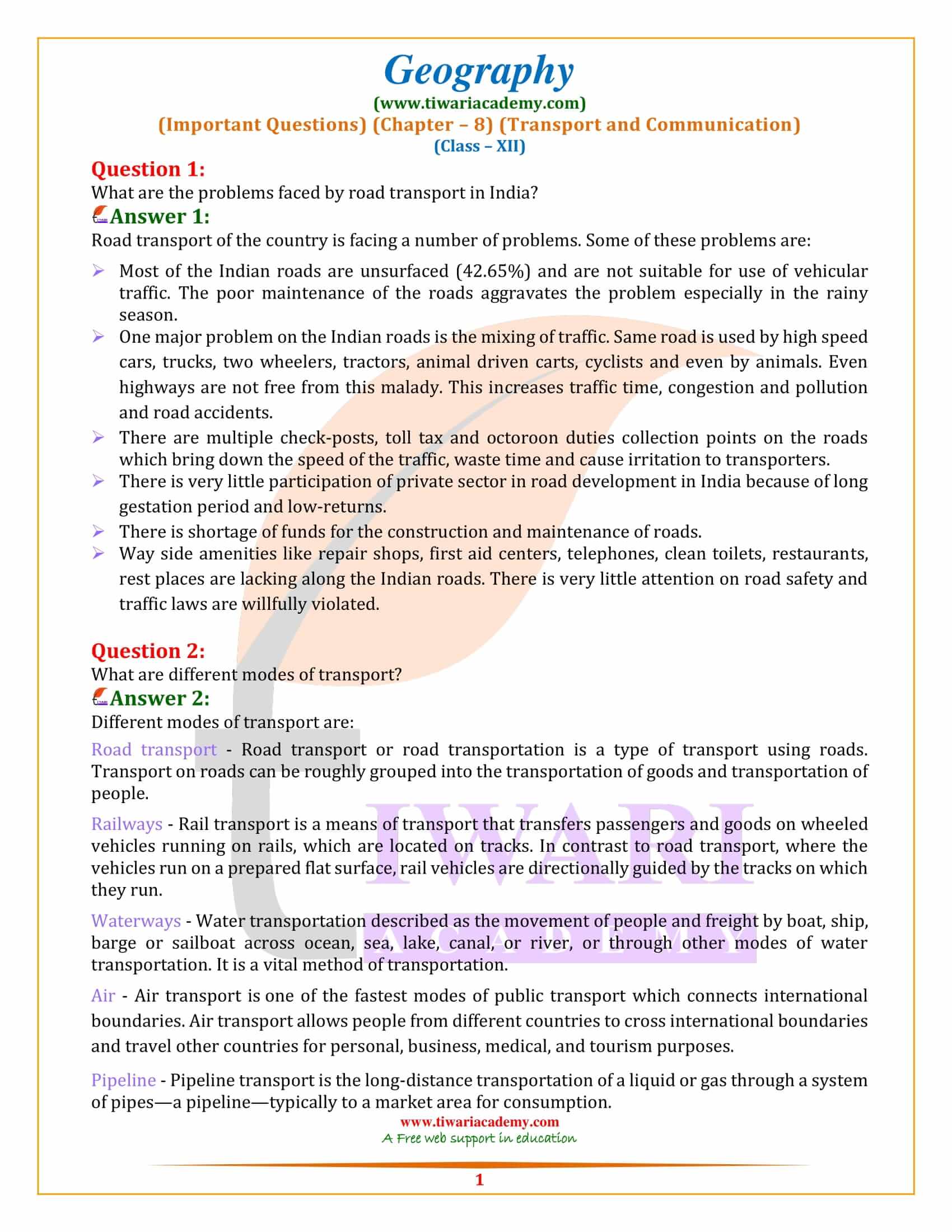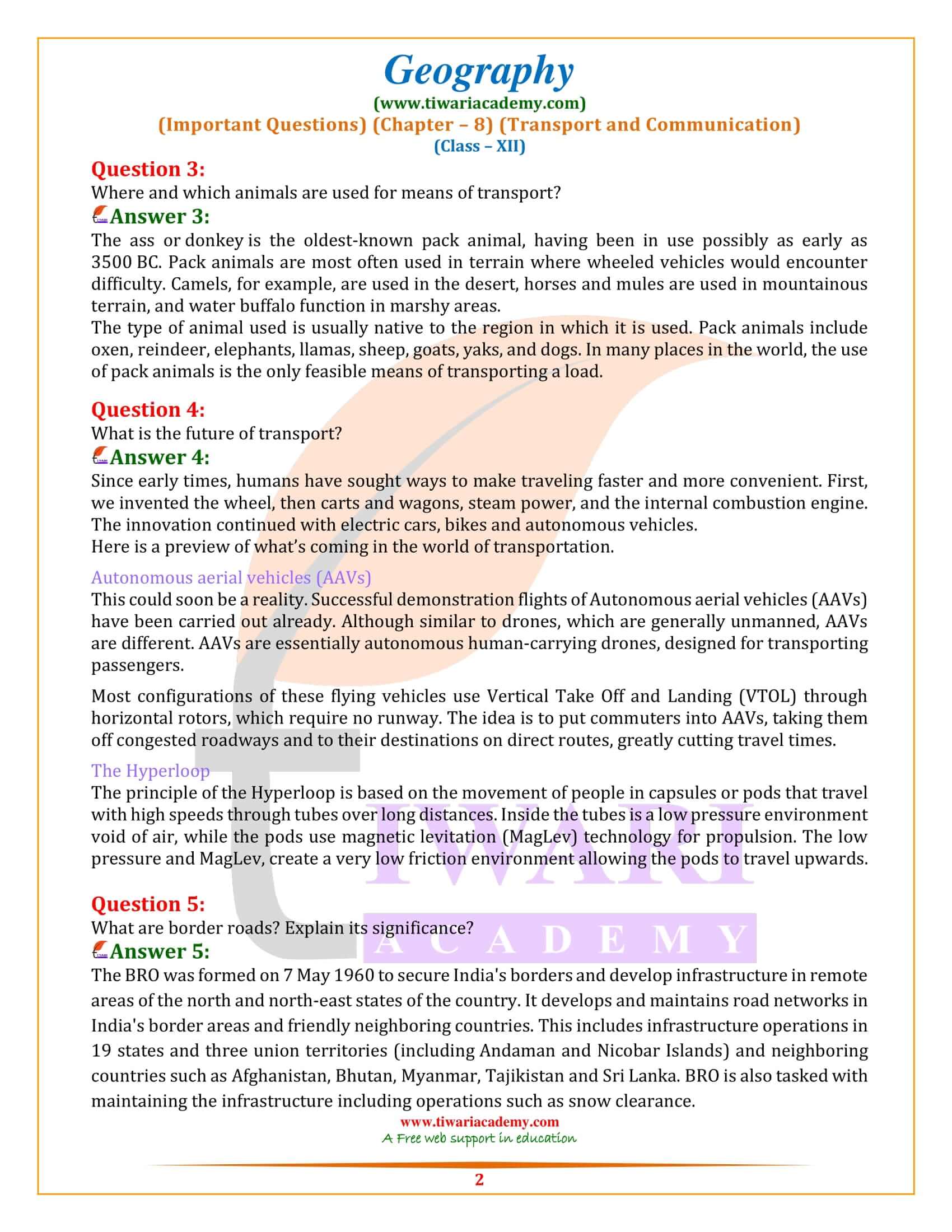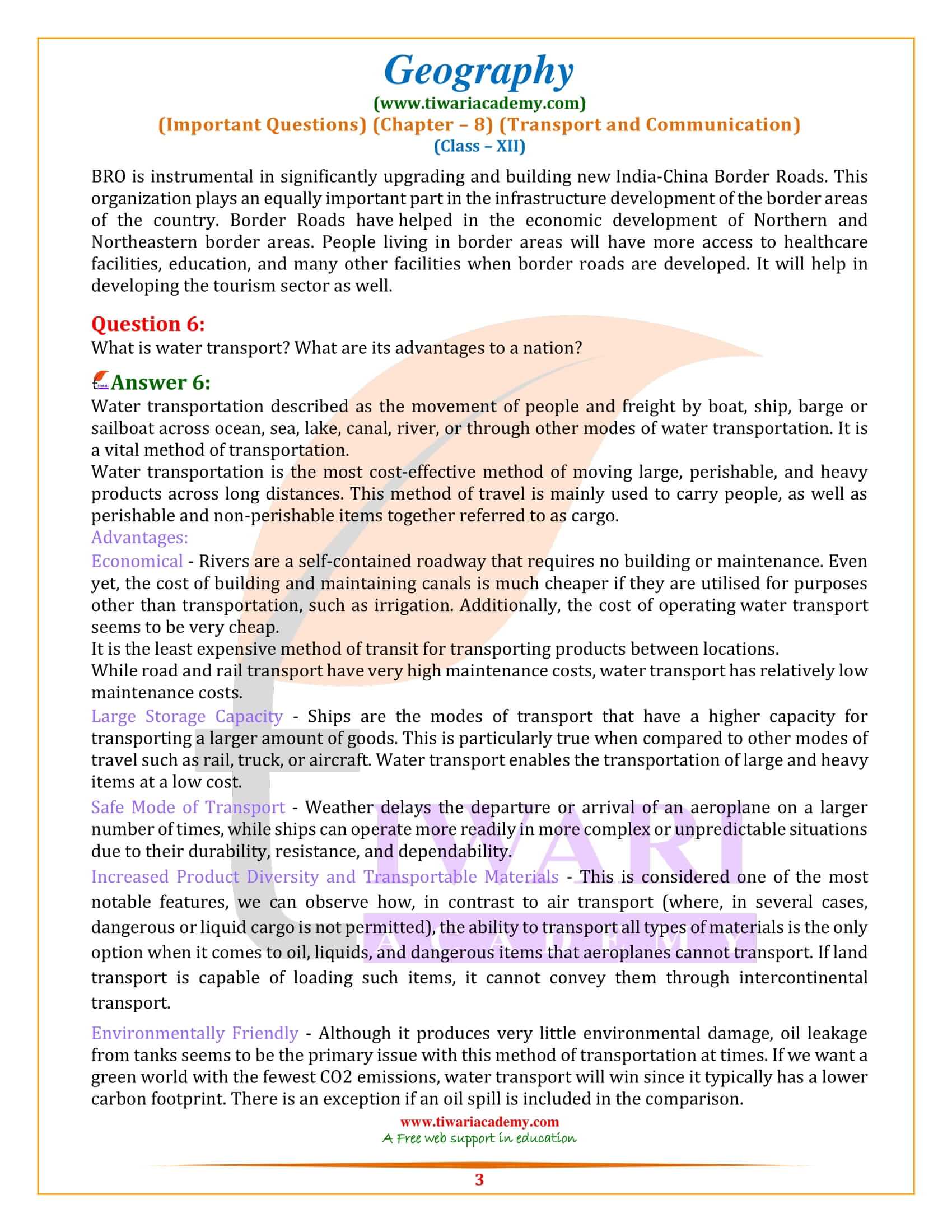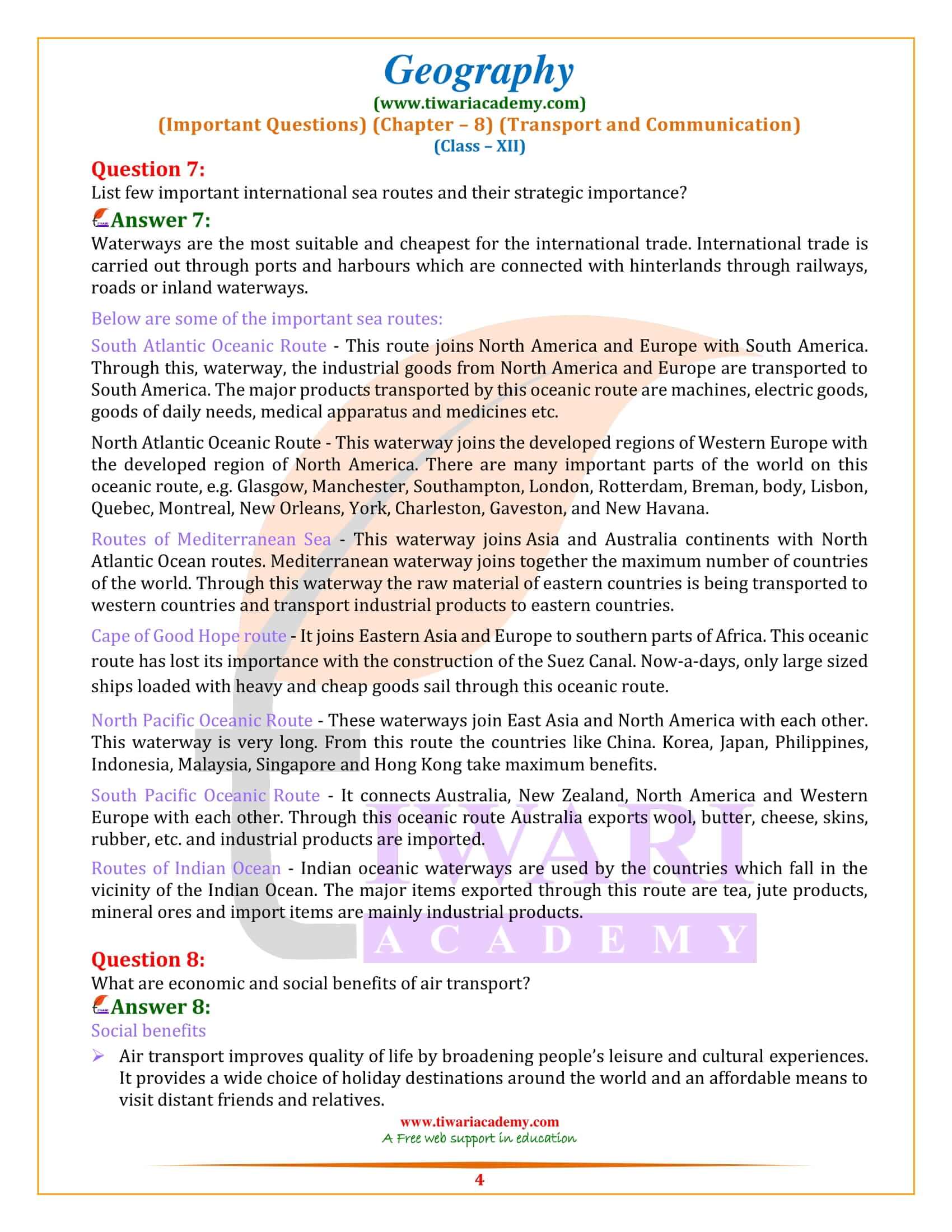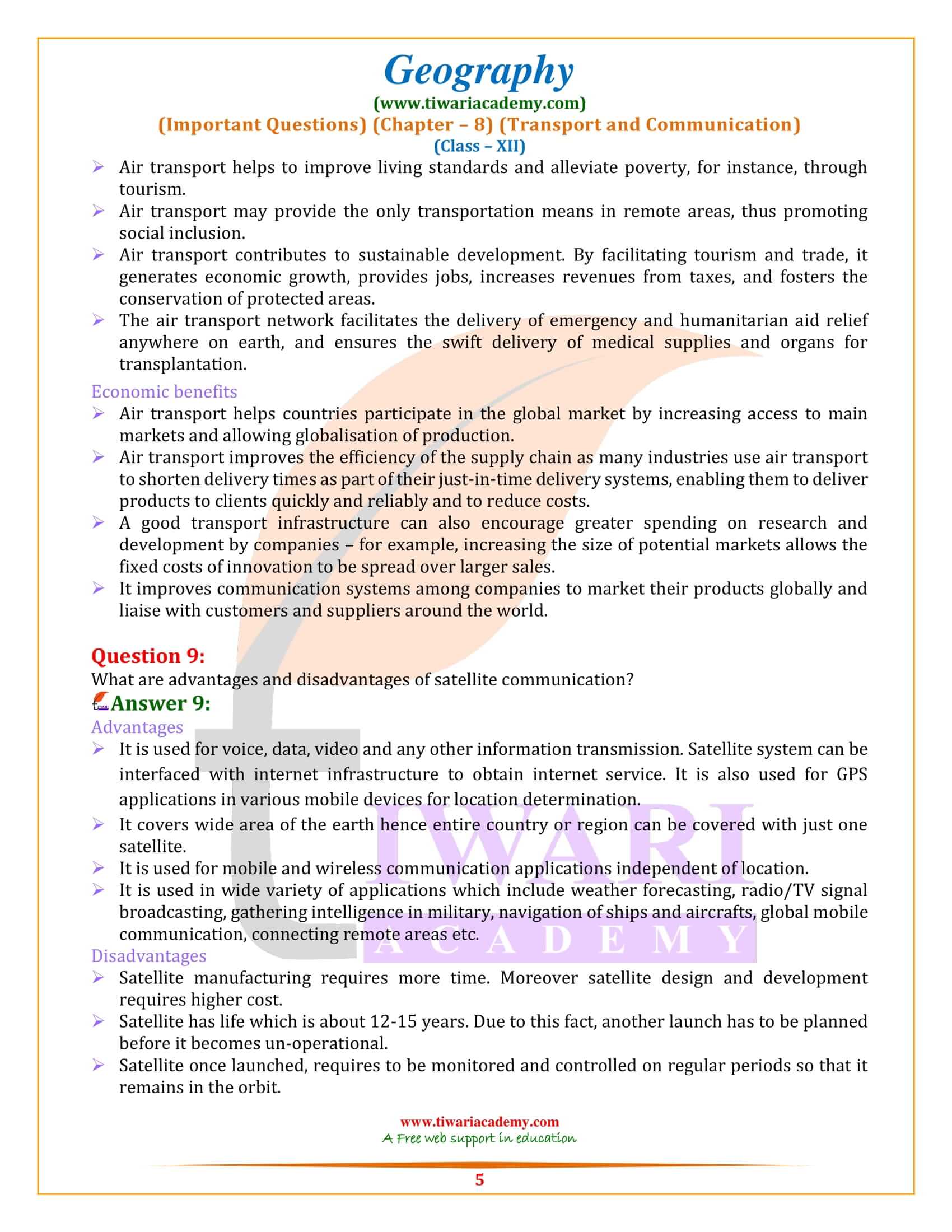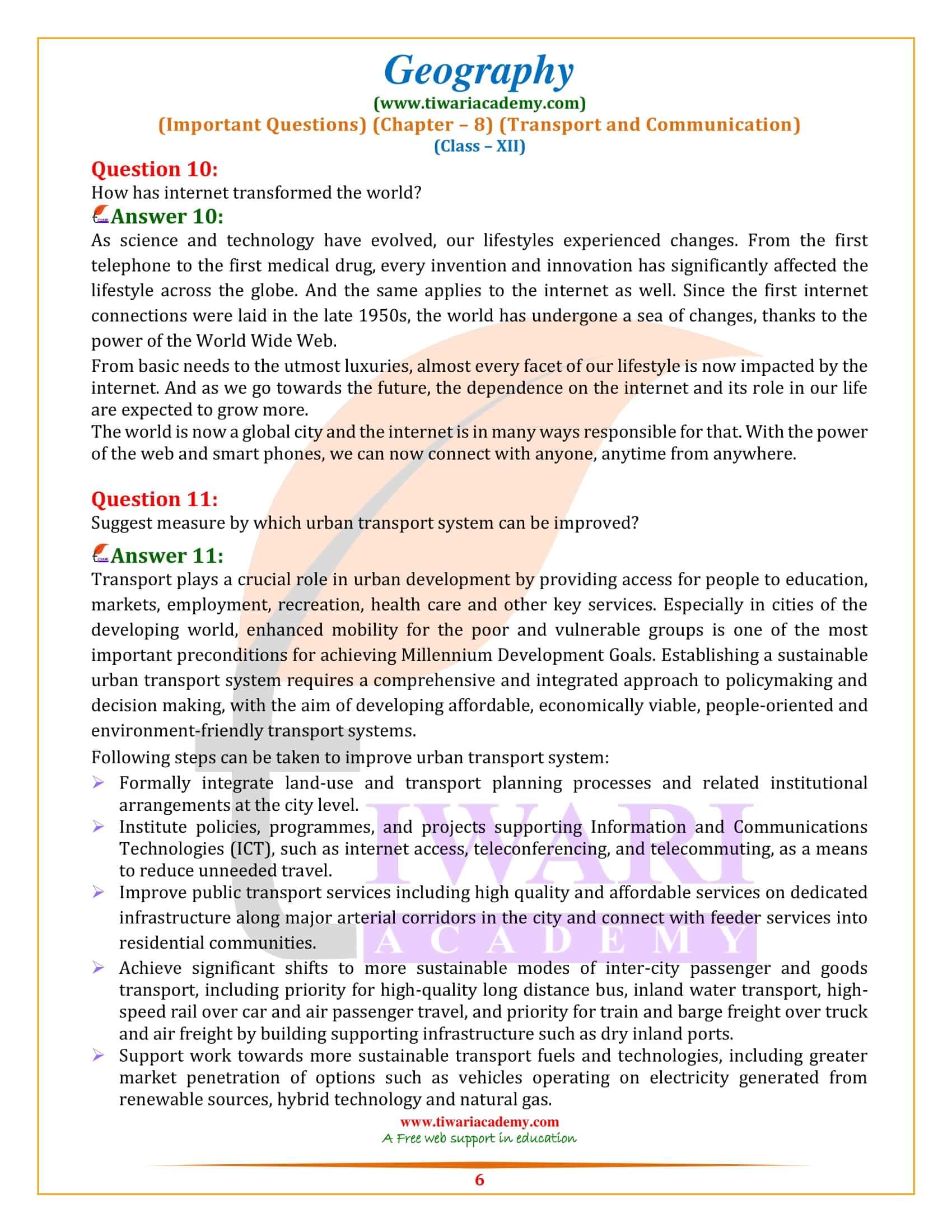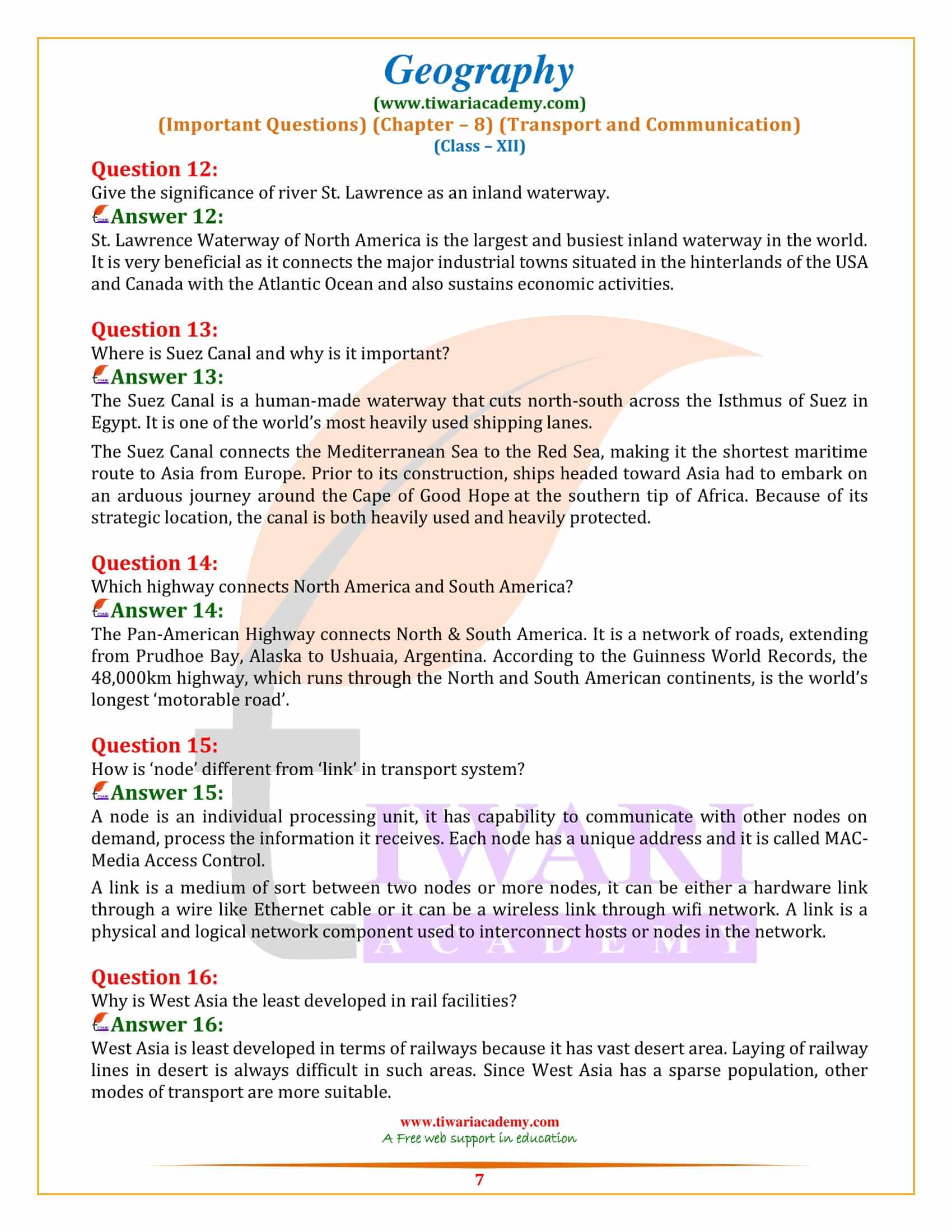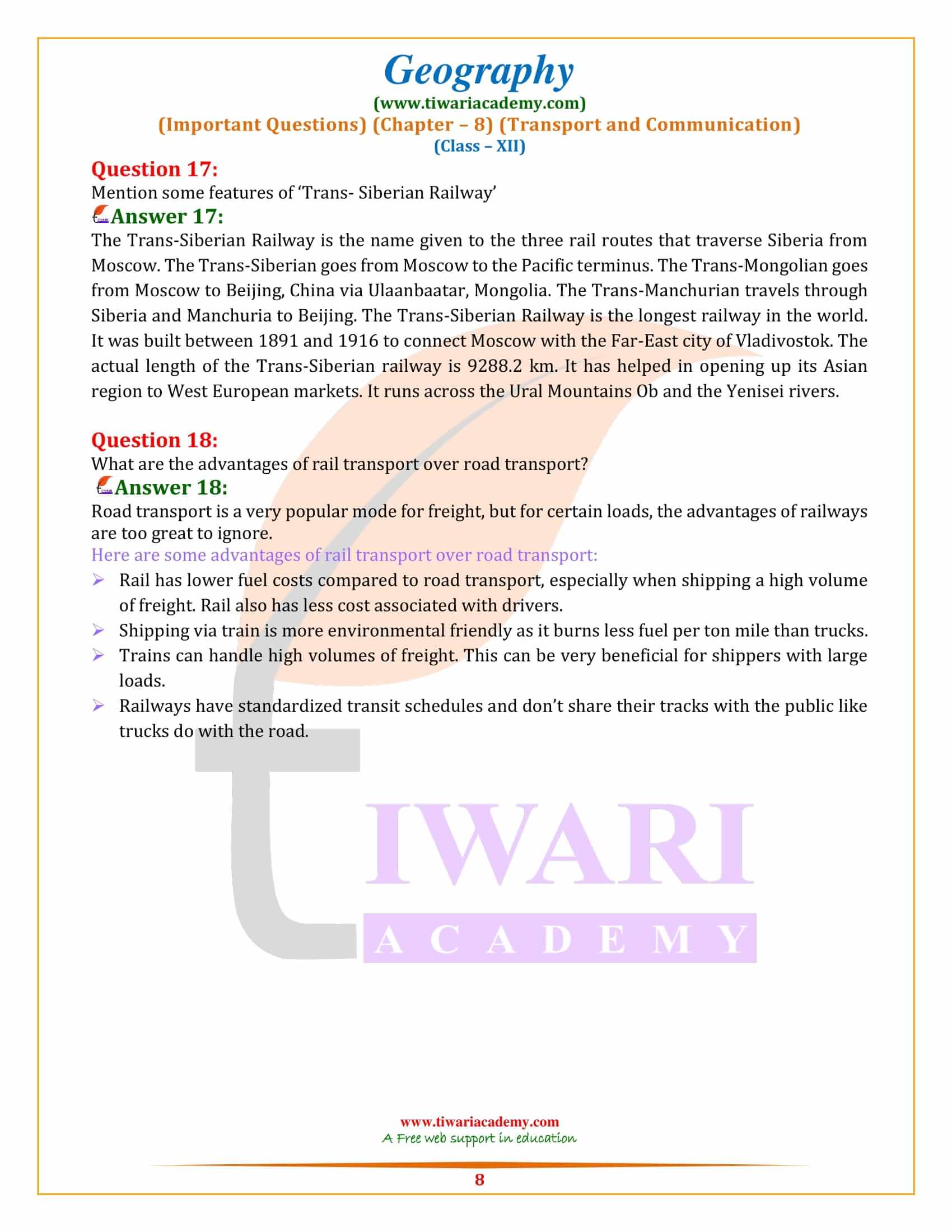NCERT Solutions for Class 12 Geography Chapter 8 Important Questions of Transport and Communication for new session 2025-26. Get extra questions for practice in class 12 Geography chapter 8 Fundamentals of Human Geography to get good marks in board exams.
Class 12 Geography Chapter 8 Important Questions
Class 12 Geography Chapter 8 Important Extra Question Answers
What are the problems faced by road transport in India?
Road transport of the country is facing a number of problems. Some of these problems are:
- Most of the Indian roads are unsurfaced (42.65%) and are not suitable for use of vehicular traffic. The poor maintenance of the roads aggravates the problem especially in the rainy season.
- One major problem on the Indian roads is the mixing of traffic. Same road is used by high speed cars, trucks, two wheelers, tractors, animal driven carts, cyclists and even by animals. Even highways are not free from this malady. This in¬creases traffic time, congestion and pollution and road accidents.
- There are multiple check-posts, toll tax and other duties collection points on the roads which bring down the speed of the traffic, waste time and cause irritation to transporters.
- There is very little participation of private sector in road development in India because of long gestation period and low-returns.
- There is shortage of funds for the construction and maintenance of roads.
- Way side amenities like repair shops, first aid centers, telephones, clean toilets, restaurants, rest places are lacking along the Indian roads. There is very little attention on road safety and traffic laws are willfully violated.
What are different modes of transport?
Different modes of transport are:
Road transport – Road transport or road transportation is a type of transport using roads. Transport on roads can be roughly grouped into the transportation of goods and transportation of people.
Railways – Rail transport is a means of transport that transfers passengers and goods on wheeled vehicles running on rails, which are located on tracks. In contrast to road transport, where the vehicles run on a prepared flat surface, rail vehicles are directionally guided by the tracks on which they run.
Waterways – Water transportation described as the movement of people and freight by boat, ship, barge or sailboat across ocean, sea, lake, canal, or river, or through other modes of water transportation. It is a vital method of transportation.
Air – Air transport is one of the fastest modes of public transport which connects international boundaries. Air transport allows people from different countries to cross international boundaries and travel other countries for personal, business, medical, and tourism purposes.
Pipeline – Pipeline transport is the long-distance transportation of a liquid or gas through a system of pipes—a pipeline—typically to a market area for consumption.
Where and which animals are used for means of transport?
The ass or donkey is the oldest-known pack animal, having been in use possibly as early as 3500 BC. Pack animals are most often used in terrain where wheeled vehicles would encounter difficulty. Camels, for example, are used in the desert, horses and mules are used in mountainous terrain, and water buffalo function in marshy areas.
The type of animal used is usually native to the region in which it is used. Pack animals include oxen, reindeer, elephants, llamas, sheep, goats, yaks, and dogs. In many places in the world, the use of pack animals is the only feasible means of transporting a load.
What is the future of transport?
Since early times, humans have sought ways to make traveling faster and more convenient. First, we invented the wheel, then carts and wagons, steam power, and the internal combustion engine. The innovation continued with electric cars, bikes and autonomous vehicles.
Here is a preview of what’s coming in the world of transportation.
Autonomous aerial vehicles (AAVs)
This could soon be a reality. Successful demonstration flights of Autonomous aerial vehicles (AAVs) have been carried out already. Although similar to drones, which are generally unmanned, AAVs are different. AAVs are essentially autonomous human-carrying drones, designed for transporting passengers.
Most configurations of these flying vehicles use Vertical Take Off and Landing (VTOL) through horizontal rotors, which require no runway. The idea is to put commuters into AAVs, taking them off congested roadways and to their destinations on direct routes, greatly cutting travel times.
The Hyperloop
The principle of the Hyperloop is based on the movement of people in capsules or pods that travel with high speeds through tubes over long distances. Inside the tubes is a low pressure environment void of air, while the pods use magnetic levitation (MagLev) technology for propulsion. The low pressure and MagLev, create a very low friction environment allowing the pods to travel upwards.
What are border roads? Explain its significance?
The BRO was formed on 7 May 1960 to secure India’s borders and develop infrastructure in remote areas of the north and north-east states of the country. It develops and maintains road networks in India’s border areas and friendly neighboring countries. This includes infrastructure operations in 19 states and three union territories (including Andaman and Nicobar Islands) and neighboring countries such as Afghanistan, Bhutan, Myanmar, Tajikistan and Sri Lanka. BRO is also tasked with maintaining the infrastructure including operations such as snow clearance.
BRO is instrumental in significantly upgrading and building new India-China Border Roads. This organization plays an equally important part in the infrastructure development of the border areas of the country. Border Roads have helped in the economic development of Northern and Northeastern border areas. People living in border areas will have more access to healthcare facilities, education, and many other facilities when border roads are developed. It will help in developing the tourism sector as well.
